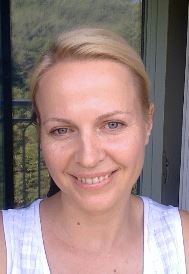Cavitation: Acoustic Implosions in Water. A new Approach to Structuring of Materials
 Speaker: Dr. Daria Andreeva- Bäumler
Speaker: Dr. Daria Andreeva- Bäumler Host: Prof Antonio Castro Neto
Abstract Details: Nonlinear modulation of microstructures concerns questions also relevant for understanding of the origin of life, material science, geo- and bio- science. Recent examples are the formation of chiral and hierarchically structured porous metal composites, epitaxial strain induced transitions in layered oxides, switchable infrared nanophotonic elements based on phase change materials, design of autonomous motors, etc. However, the main question is, how to establish a dynamic control of useful characteristics, for example dynamic control of crystal / grain size and composition modulation in solids. A possible answer is to develop a new generation of dynamic impactors that can trigger oscillations of structures and functions. In my talk I focus on ultrasonically triggered cavitation, that can be defined as growth and violent collapse of microbubbles, as a unique but underappreciated approach to generating a strong shock impact and thus rapid increase of temperature and pressure at a localized area (<0.02 µm). At 20 kHz bubbles oscillate with a period of 50 ?s. Adiabatic collapse of a bubble leads to electron temperature up to tens of eV. Thus, shock impact of oscillating bubbles creates highly non-equilibrium conditions for a dynamic modification of liquids and solids at microseconds time scale. I will talk about the linearity of cavitation driven microstructural changes in metals, namely changes in Ni grain sizes and transformations of Ni phases in Ni based alloys vs. time of ultrasonic treatment. Our work shows that the Interaction of microbubbles with surfaces drive several forces that lead to both grain growth and grain size reduction. The main questions are: Which forces drive grain growth and which forces trigger grain size reduction? What is the coupling mechanism that allows periodic switching between forces in the cavitating medium and leads to nonlinear effects in solids? Furthermore, the efficiency of the ultrasonically modified Ni compounds in synthesis of carbon phases can be established as a tool for monitoring of the effects of cavitation on solids. I will demonstrate cavitation driven sp2 and sp3 carbon transformations on Ni surface.
About The Speaker: Center for Soft and Living Matter Institute for Basic Science Ulsan National Institute of Science and Technology 50 UNIST-gill, Ulju-gun, Ulsan 44919 Republic of Korea (South Korea) Dr. Daria Andreeva- Bäumler is a Senior Research Fellow at the Centre for Soft and Living Matter, at the Institute for Basic Science, Ulsan, South Korea. She is a physical chemist who now applies her knowledge in the context of sonochemical material processing. Daria has authored more than 80 research papers and received various fellowships (e.g. AvH, DAAD, DFG, UNESCO, etc.). In the past, Daria has studied gas separation polymer membranes, composite barrier coatings and regulation of corrosion degradation by polyelectrolyte membranes with pH buffering properties. She currently focus on the investigation of the non-equilibrium phenomena. Having finishing her habilitation at the University of Bayreuth, Germany, in 2017, she joined the CSLM, South Korea, where she explores non-equilibrium chemistry for material synthesis and phase transformations. Selected Publications Phase structuring in metal alloys: Ultrasound-assisted top-down approach to engineering of nanostructured catalytic materials, Cherepanov, P. V.; Andreeva D. V. Ultrason. Sonochem., 2017, 35, 556-562. The use of ultrasonic cavitation for near-surface structuring of robust and low-cost AlNi catalysts for hydrogen production, Cherepanov P. V.; Melnyk I.; Skorb E. V.; Fratzl P.; Zolotoyabko E.; Dubrovinskaia N.; Dubrovinsky L.; Avadhut Y. S.; Senker J.; Leppert L.; Kümmel S.; Andreeva D. V. Green Chemistry, 2015, 17, 2745-2749. Ultrasonically induced pathways of silicon modification towards a porous luminescent structure, Skorb, E. V.; Andreeva, D. V.; Möhwald, H. Angew. Chem. Inter. Ed., 2012, 51, 1-6. Sonochemical activation of Al/Ni hydrogenization catalyst, Dulle, J.; Nemeth, S.; Skorb, E. V.; Irrgang, T.; Senker, J.; Kempe, R.; Fery., A.; Andreeva, D. V. Advanced Functional Materials, 2012, 22, 3128-3135. Cavitation Engineered 3D Sponge Networks and Their Application in Active Surface Construction. Gensel, J.; Borke, T.; Pazos-Pérez, N.; Fery, A.; Andreeva, D. V.; Betthausen, E.; Müller, A.; Möhwald, H.; Skorb, E. V. Advanced Materials, 2012, 24, 985-989. Self-Healing Anticorrosion Coatings Based on pH-Sensitive Polyelectrolyte/Inhibitor Sandwich-like Nanostructures, Andreeva, D. V.; Fix, D.; Shchukin, D. G.; Möhwald, H. Advanced Materials, 2008, 20, 2789-2794.
Click HERE for directions—
To view all the upcoming seminars, you can visit: https://graphene.nus.edu.sg/news-events/events/
You may also Like & Subscribe our following channels below to receive instant notifications for new announcements.
